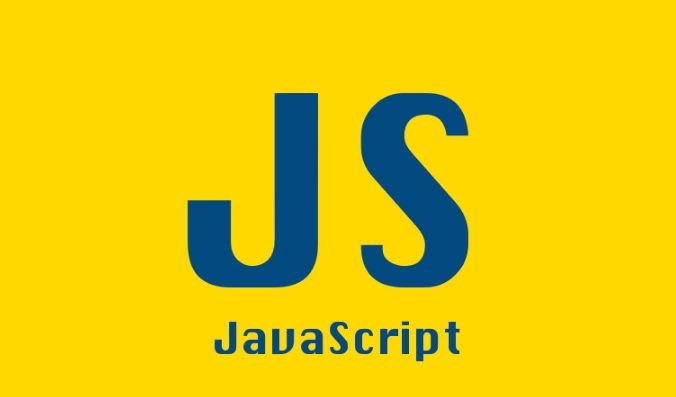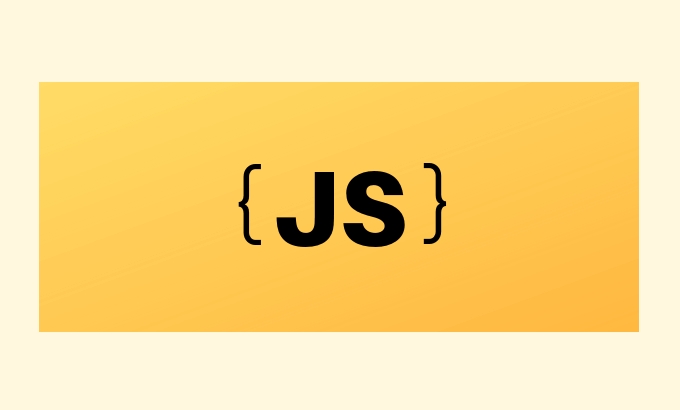 Web Front-end
Web Front-end
 JS Tutorial
JS Tutorial
 Building Scalable Microservices with Node.js and Integrating with Polyglot Java Services
Building Scalable Microservices with Node.js and Integrating with Polyglot Java Services
Building Scalable Microservices with Node.js and Integrating with Polyglot Java Services
Jul 16, 2025 am 02:50 AMThe key to building a scalable Node.js microservice and integrating with Java services is to design clear interface boundaries, select appropriate communication methods, implement service discovery and configuration management, and unified logging and monitoring systems. 1. Use OpenAPI to define interfaces, version APIs, and unify error code formats to ensure cross-language call consistency; 2. Select HTTP REST, gRPC or message queues according to the scenario to balance ease of use and performance requirements; 3. Use general service registration centers such as Consul or Kubernetes to realize automatic service registration and discovery, and support environmental isolation through unified configuration management; 4. Standardize JSON log formats, collect them centrally to ELK or Loki, and use Prometheus to uniformly expose and monitor indicators to improve system observability.

The core of the microservice architecture is decoupling and scalability, and Node.js is ideal for building highly concurrent microservices due to its non-blocking I/O and lightweight features. When these services need to be integrated with services written in Java, the challenge becomes how to communicate efficiently between different language ecology. Here are some key points and suggestions to help you build scalable Node.js microservices and integrate smoothly with Java services.

1. Design clear interface boundaries
In the microservice architecture, communication dependency interfaces between services are designed. Whether it is Node.js or Java services, consistent interface specifications need to be followed, such as using RESTful API or gRPC.
- Defining interfaces using OpenAPI (Swagger) : This not only makes front-end and back-end development more efficient, but also shares interface definitions between different languages, reducing communication costs.
- Interface versioning : Avoid interface changes causing failure of inter-service calls, especially in multilingual hybrid environments, versioning is particularly important.
- Unified error code and response format : For example, using standard HTTP status codes with a unified JSON response structure makes it easier for callers to handle exceptions.
2. Choose the right communication method
The way Node.js and Java services communicate directly affect performance and maintenance costs. Common scenarios include HTTP REST, gRPC, and message queues.

- HTTP REST : Simple and easy to use, suitable for cross-language communication. Node.js has mature frameworks such as Express and Koa. Java can quickly build a REST interface using Spring Boot.
- gRPC : suitable for scenarios with high performance and real-time requirements. gRPC supports multiple languages, including Node.js and Java, uses Protobuf to define interfaces, and has high communication efficiency.
- Asynchronous communication (such as Kafka, RabbitMQ) : When services do not require immediate response, use message queue decoupling services to improve the overall scalability and fault tolerance of the system.
3. Service Discovery and Configuration Management
In a multilingual microservice environment, the service registration and discovery mechanism is key. You can choose a common service registry, such as Consul, Eureka, or Kubernetes' own mechanism.
- Use a common service registry : for example Consul, which supports multiple language clients, Node.js and Java can register and discover services.
- Unified configuration management : You can use Spring Cloud Config (Java) to combine with Node.js custom configuration services, or use Kubernetes ConfigMap to manage configurations uniformly.
- Environmental isolation : Different environments (development, testing, production) should use different service discovery configurations to avoid interference with each other.
4. Unified logs and monitoring
Services in different languages are often different in terms of log format and monitoring methods. Unified logs and monitoring systems help to quickly locate problems.

- Standardized log format : For example, use JSON format uniformly, including fields such as timestamp, service name, request ID, log level, etc.
- Centralized log collection : Use ELK (Elasticsearch, Logstash, Kibana) or Loki to collect all service logs for unified analysis.
- Monitoring metrics are uniformly exposed : Node.js can use the Prometheus client library to expose metrics, and Java uses Micrometer to pull and display them through Prometheus.
Basically that's it. The key to building scalable Node.js microservices and integrating with Java services is interface design, communication method selection, service governance and monitoring unification. Although multiple technology stacks are involved, efficient collaboration can be achieved as long as unified specifications are followed.
The above is the detailed content of Building Scalable Microservices with Node.js and Integrating with Polyglot Java Services. For more information, please follow other related articles on the PHP Chinese website!

Hot AI Tools

Undress AI Tool
Undress images for free

Undresser.AI Undress
AI-powered app for creating realistic nude photos

AI Clothes Remover
Online AI tool for removing clothes from photos.

Clothoff.io
AI clothes remover

Video Face Swap
Swap faces in any video effortlessly with our completely free AI face swap tool!

Hot Article

Hot Tools

Notepad++7.3.1
Easy-to-use and free code editor

SublimeText3 Chinese version
Chinese version, very easy to use

Zend Studio 13.0.1
Powerful PHP integrated development environment

Dreamweaver CS6
Visual web development tools

SublimeText3 Mac version
God-level code editing software (SublimeText3)
 PHP Frameworks and Microservices: Cloud Native Deployment and Containerization
Jun 04, 2024 pm 12:48 PM
PHP Frameworks and Microservices: Cloud Native Deployment and Containerization
Jun 04, 2024 pm 12:48 PM
Benefits of combining PHP framework with microservices: Scalability: Easily extend the application, add new features or handle more load. Flexibility: Microservices are deployed and maintained independently, making it easier to make changes and updates. High availability: The failure of one microservice does not affect other parts, ensuring higher availability. Practical case: Deploying microservices using Laravel and Kubernetes Steps: Create a Laravel project. Define microservice controllers. Create Dockerfile. Create a Kubernetes manifest. Deploy microservices. Test microservices.
 Create distributed systems using the Golang microservices framework
Jun 05, 2024 pm 06:36 PM
Create distributed systems using the Golang microservices framework
Jun 05, 2024 pm 06:36 PM
Create a distributed system using the Golang microservices framework: Install Golang, choose a microservices framework (such as Gin), create a Gin microservice, add endpoints to deploy the microservice, build and run the application, create an order and inventory microservice, use the endpoint to process orders and inventory Use messaging systems such as Kafka to connect microservices Use the sarama library to produce and consume order information
 How does the Java framework support horizontal scaling of microservices?
Jun 04, 2024 pm 04:34 PM
How does the Java framework support horizontal scaling of microservices?
Jun 04, 2024 pm 04:34 PM
The Java framework supports horizontal expansion of microservices. Specific methods include: Spring Cloud provides Ribbon and Feign for server-side and client-side load balancing. NetflixOSS provides Eureka and Zuul to implement service discovery, load balancing and failover. Kubernetes simplifies horizontal scaling with autoscaling, health checks, and automatic restarts.
 What role does Spring Boot play in microservices architecture?
Jun 04, 2024 pm 02:34 PM
What role does Spring Boot play in microservices architecture?
Jun 04, 2024 pm 02:34 PM
SpringBoot plays a crucial role in simplifying development and deployment in microservice architecture: providing annotation-based automatic configuration and handling common configuration tasks, such as database connections. Support verification of API contracts through contract testing, reducing destructive changes between services. Has production-ready features such as metric collection, monitoring, and health checks to facilitate managing microservices in production environments.
 Microservice architecture monitoring and alarming in Java framework
Jun 02, 2024 pm 12:39 PM
Microservice architecture monitoring and alarming in Java framework
Jun 02, 2024 pm 12:39 PM
Microservice architecture monitoring and alarming in the Java framework In the microservice architecture, monitoring and alarming are crucial to ensuring system health and reliable operation. This article will introduce how to use Java framework to implement monitoring and alarming of microservice architecture. Practical case: Use SpringBoot+Prometheus+Alertmanager1. Integrate Prometheus@ConfigurationpublicclassPrometheusConfig{@BeanpublicSpringBootMetricsCollectorspringBootMetric
 PHP framework and microservices: data consistency and transaction management
Jun 02, 2024 pm 04:59 PM
PHP framework and microservices: data consistency and transaction management
Jun 02, 2024 pm 04:59 PM
In PHP microservice architecture, data consistency and transaction management are crucial. The PHP framework provides mechanisms to implement these requirements: use transaction classes, such as DB::transaction in Laravel, to define transaction boundaries. Use an ORM framework, such as Doctrine, to provide atomic operations such as the lock() method to prevent concurrency errors. For distributed transactions, consider using a distributed transaction manager such as Saga or 2PC. For example, transactions are used in online store scenarios to ensure data consistency when adding to a shopping cart. Through these mechanisms, the PHP framework effectively manages transactions and data consistency, improving application robustness.
 What are the challenges in building a microservices architecture using Java frameworks?
Jun 02, 2024 pm 03:22 PM
What are the challenges in building a microservices architecture using Java frameworks?
Jun 02, 2024 pm 03:22 PM
Building a microservice architecture using a Java framework involves the following challenges: Inter-service communication: Choose an appropriate communication mechanism such as REST API, HTTP, gRPC or message queue. Distributed data management: Maintain data consistency and avoid distributed transactions. Service discovery and registration: Integrate mechanisms such as SpringCloudEureka or HashiCorpConsul. Configuration management: Use SpringCloudConfigServer or HashiCorpVault to centrally manage configurations. Monitoring and observability: Integrate Prometheus and Grafana for indicator monitoring, and use SpringBootActuator to provide operational indicators.
 Comparison of Golang and Node.js in backend development
Jun 03, 2024 pm 02:31 PM
Comparison of Golang and Node.js in backend development
Jun 03, 2024 pm 02:31 PM
Go and Node.js have differences in typing (strong/weak), concurrency (goroutine/event loop), and garbage collection (automatic/manual). Go has high throughput and low latency, and is suitable for high-load backends; Node.js is good at asynchronous I/O and is suitable for high concurrency and short requests. Practical cases of the two include Kubernetes (Go), database connection (Node.js), and web applications (Go/Node.js). The final choice depends on application needs, team skills, and personal preference.





